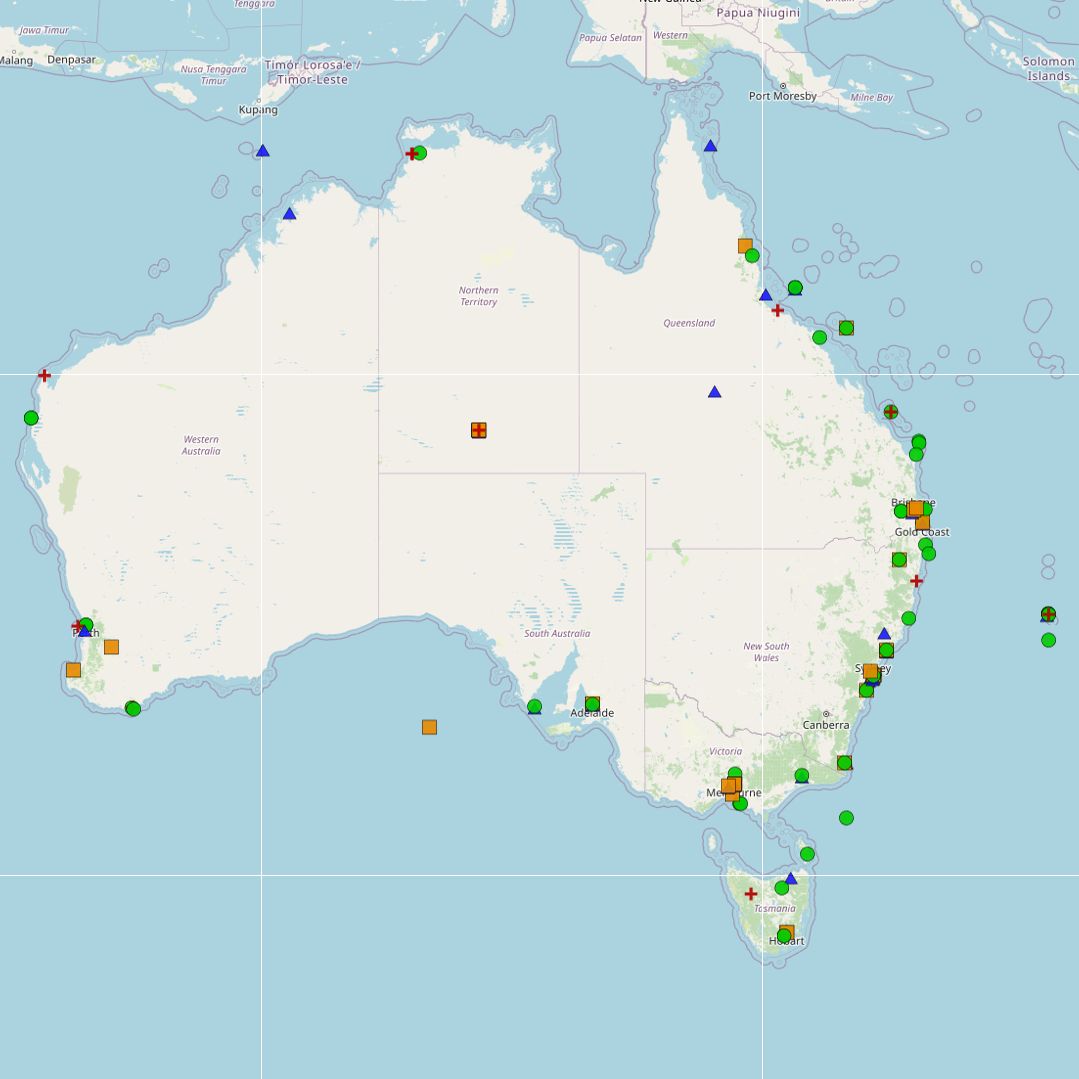School of Biological Sciences, The University of Adelaide
Type of resources
Topics
Keywords
Contact for the resource
Provided by
Years
-

A review of peer-reviewed publications was undertaken, focusing on coastal and marine microplastics relevant to South Eastern Australia (South Australia, Victoria, and New South Wales), as well as from ongoing citizen science programmes from AUSMAP. This dataset summarises basic information about the microplastics studies: the location of the study; if the study focused on water, sediment or biota; the type of biota (for biotic studies); and the DOI of the publication. Although the primary focus of this study was restricted to southeastern Australia, studies collated from other regions have also been included in this dataset. The outcomes of the literature review for other regions (QLD, NT, SA, WA, Tas) should not be considered comprehensive.
-

This record provides an overview of the NESP Marine and Coastal Hub small-scale study - "Microplastics in South Eastern Australian coastal waters: synthesising current data and identifying key knowledge gaps for the management of plastic pollution". For specific data outputs from this project, please see child records associated with this metadata. -------------------- Plastic pollution is pervasive in coastal environments globally and in Australia. Due to their small size, microplastics (pieces <5mm) are readily ingested by marine organisms and potentially accumulate across food webs, raising concerns for biota, ecosystem services and human health. Yet, to define guidelines and support policy actions that curb microplastic pollution, managers and decision-makers lack clear, synthesised information on this multifaceted issue, including on occurrence, sources, and pathways of microplastics in coastal and marine environments. This project produces a synthesis of current data on microplastics in South Eastern Australian coastal waters (i.e. South Australia, Victoria and New South Wales) and identify key knowledge gaps for the management of plastic pollution. Outputs • List of compiled datasets relating to microplastics in SE Aus waters [spatial dataset] • Scoping document synthesising the information available on the presence of microplastics in coastal marine environments in South Eastern Australia, its potential sources and pathways [written]
-
Five polymorphic microsatellite loci were developed and then used to assess the population genetic structure of a commercially harvested merobenthic octopus species (Octopus maorum) in south-east Australian and New Zealand (NZ) waters. Beak and stylet morphometrics were also used to assess population differentiation in conjunction with the genetic data.
-
By utilising targeted microprobe technology, the analysis of elements incorporated within the hard bio-mineralised structures of marine organisms has provided unique insights into the population biology of many species. As hard structures grow, elements from surrounding waters are incorporated effectively providing a natural ‘tag’ that is often unique to the animal’s particular location or habitat. The spatial distribution of elements within octopus stylets was investigated, using the nuclear microprobe, to assess their potential for determining dispersal and population structure in octopus populations. This was investigated in adult Octopus pallidus sourced from a commercial fishery in Tasmania.
-
A novel method was used to investigate the population structure and dispersal patterns of Octopus maorum, an octopus species with a planktonic larval stage, which forms a distinct and large aggregation in southeast Tasmania. Single and multi-elemental signatures within the ‘early life history’ region of the stylet (an internal ‘shell’) were used to determine levels of connectivity and the common origins of individuals collected from 5 locations across Tasmania, South Australia and New Zealand.
-
Targeted trace elemental analysis was used to investigate the population structure and dispersal patterns of the holobenthic octopus species Octopus pallidus. Multi-elemental signatures within the pre-hatch region of the stylet (an internal ‘shell’) were used to determine the common origins and levels of connectivity of individuals collected from 5 locations in Tasmania. To determine whether hatchling elemental signatures could be used as tags for natal origin, hatchling stylets from 3 of the 5 locations were also analysed.
 IMAS Metadata Catalogue
IMAS Metadata Catalogue